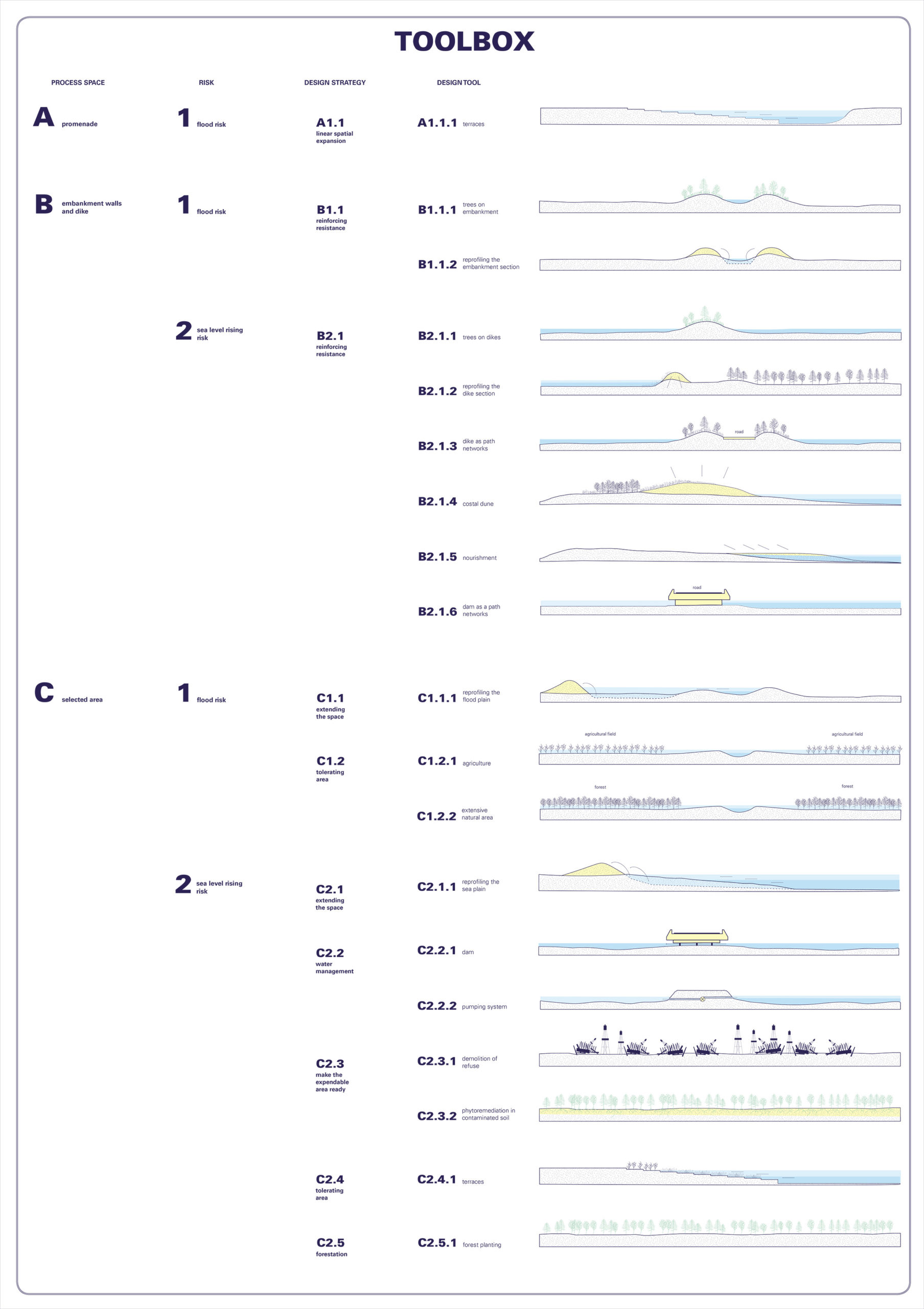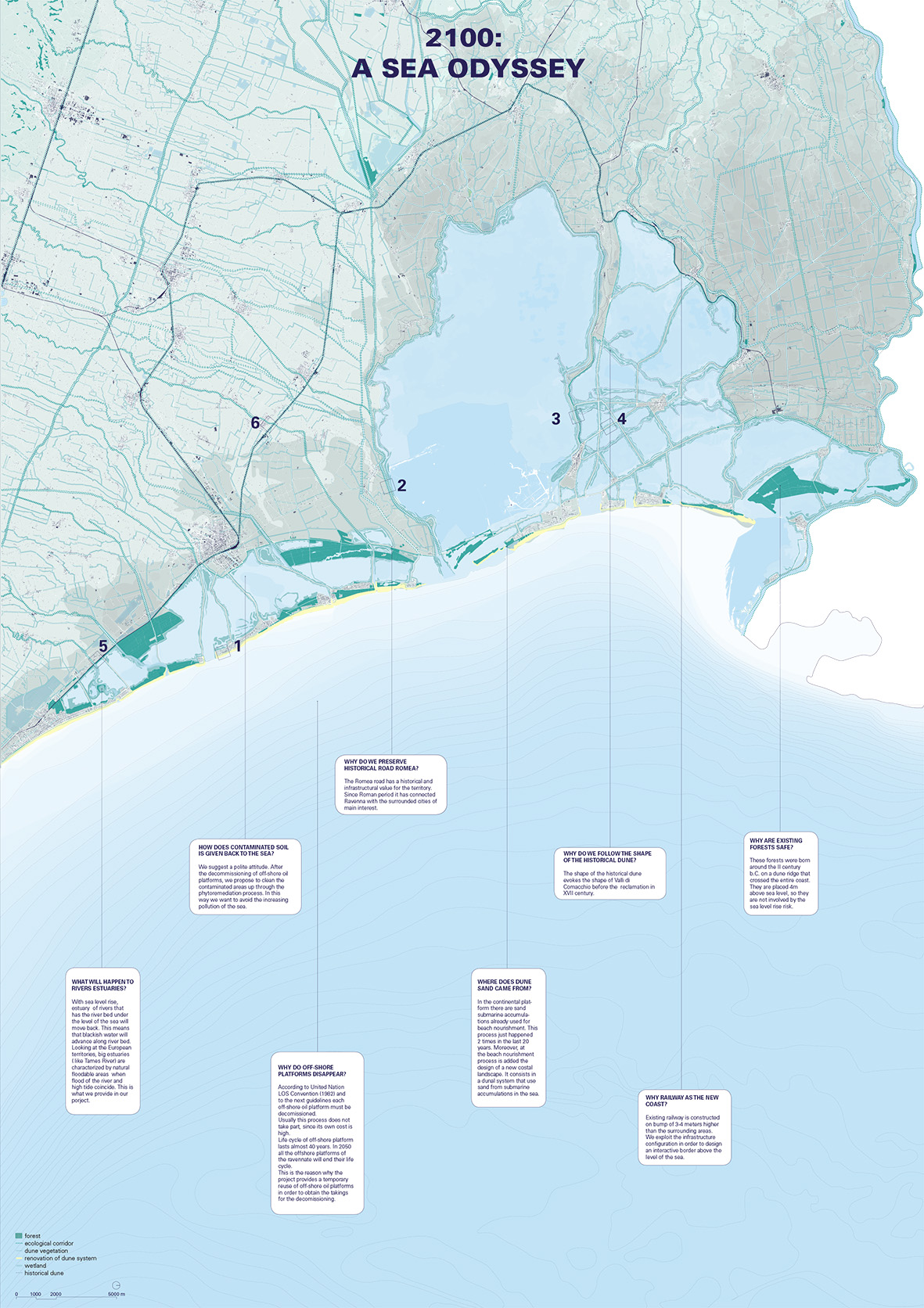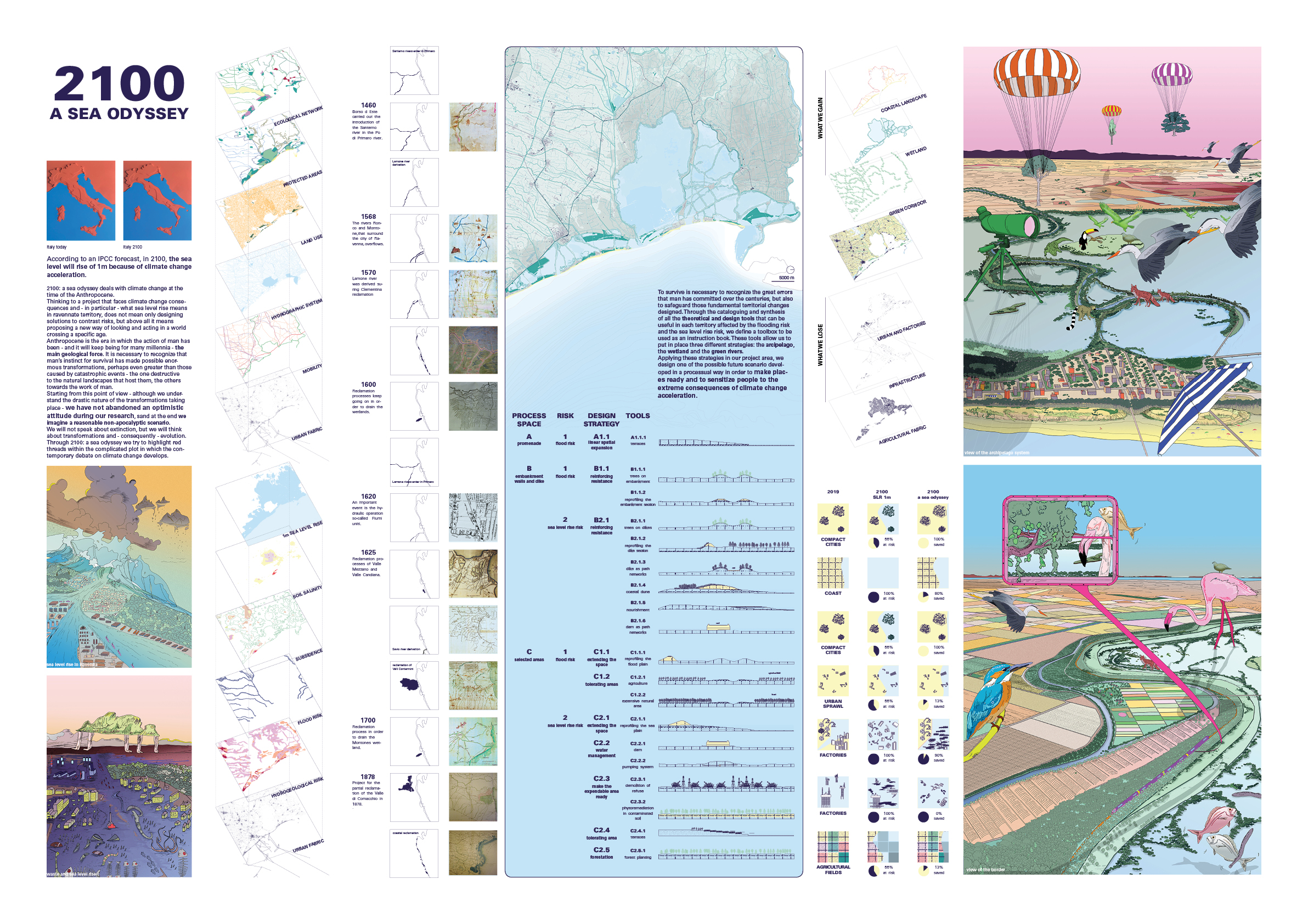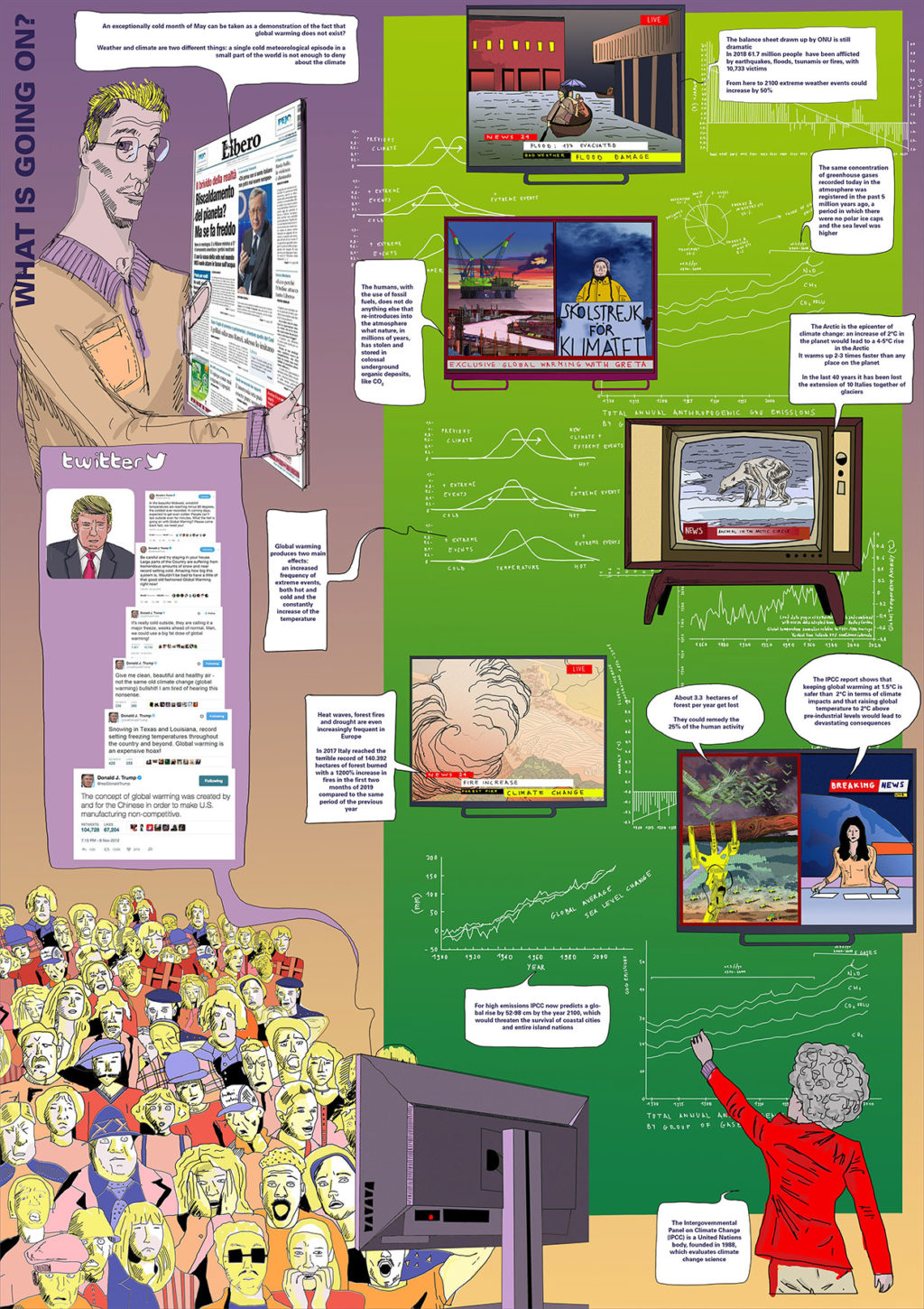According to an IPCC forecast, in 2100, the sea level will rise of 1m because of climate change acceleration.
2100: a sea odyssey deals with climate change at the time of the Anthropocene.
Thinking to a project that faces climate change consequences and – in particular – what sea level rise means in ravennate territory, does not mean only designing solutions to contrast risks, but above all it means proposing a new way of looking and acting in a world crossing a specific age.Through 2100: a sea odyssey we try to highlight red threads within the complicated plot in which the contemporary debate on climate change develops.

According to an IPCC forecast, in 2100 the sea level will rise of 1 m because of climate change acceleration. In Italy, Ravennate territory is the borderline case concerning risks related to water. From this historical analysis we gain the awareness that Po region has been transformed by large hydraulic works and countless reclamation processes. Impermanence is now and it has been in the past the main character of Ravennate territory. We analysed how the territory looks today and which are the most risks it is affected by: the hydrogeological risk and the sea level rise. Starting from the analysis of case studies we defined a toolbox in which the tools are divided by the process space where they act, the risk that they face, and the strategy they use. The set of specific instruments guarantees the reinforcement of natural barriers, the presence of areas of tolerance and the design of sacrificial areas that are returned to the sea. Through the application of the toolbox in the area we designed a possible future scenario in which the archipelago, a system of wet areas and the re-naturalization of rivers work together to make the territory resilient to the risks.

2100: a sea odyssey is one of the possible future scenario. The result of a design that brings it back to its origins. The coastal area becomes an archipelago whose islands are protected by pine forests and dune system. Through earthworks, green barriers define the perimeter of the sacrificial areas that will be back to the sea designing a new system of wetlands. These borders became buffer zones able to progressively adapt to the rising sea and to change with it. Water flow management will be guaranteed by pumping systems and dams. The agricultural landscape will be ecologically enriched thanks to the re-naturalization of the river banks. The flooding risk will be avoided by the design of expendable and floodable areas along the rivers. In this processual design, we also thought about awareness process distributed over time in order to prepare not only the places, but also people to be resilient to this changing territory.

The Board:






